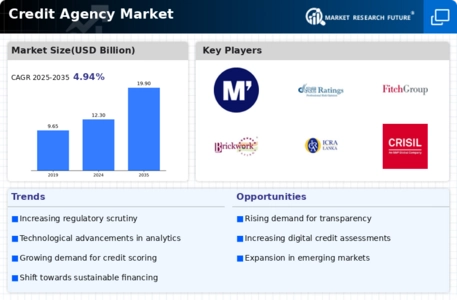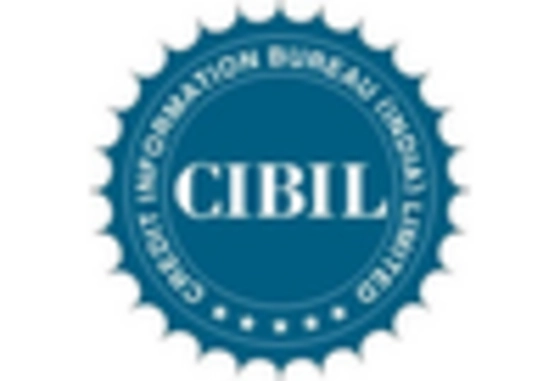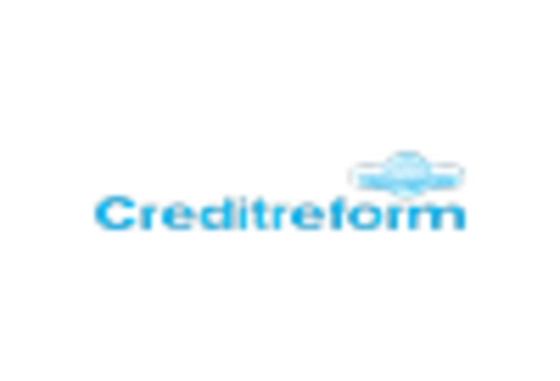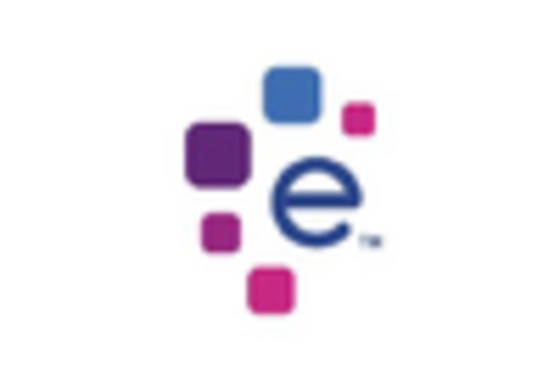Increased Demand for Credit Assessment
The Credit Agency Market is experiencing heightened demand for credit assessment services. This surge is primarily driven by the growing number of individuals and businesses seeking credit. According to recent data, the number of credit applications has risen by approximately 15% over the past year. As financial institutions and lenders strive to mitigate risk, they increasingly rely on credit agencies to provide accurate assessments. This trend indicates a robust growth trajectory for the industry, as more entities recognize the importance of thorough credit evaluations in decision-making processes. Furthermore, the expansion of e-commerce and digital lending platforms has further fueled this demand, as these platforms require reliable credit information to facilitate transactions. Consequently, credit agencies are positioned to play a pivotal role in shaping the future of credit assessment.
Technological Advancements in Data Analytics
Technological advancements are significantly influencing the Credit Agency Market, particularly in the realm of data analytics. The integration of artificial intelligence and machine learning technologies has enabled credit agencies to analyze vast amounts of data more efficiently. This capability allows for more accurate credit scoring and risk assessment, which is crucial in today's fast-paced financial environment. Recent statistics suggest that agencies utilizing advanced analytics have improved their predictive accuracy by nearly 20%. As a result, lenders are increasingly turning to these technologically adept agencies to enhance their decision-making processes. Moreover, the ability to process real-time data enhances the responsiveness of credit agencies, allowing them to adapt to market changes swiftly. This technological evolution not only streamlines operations but also enhances the overall credibility of the Credit Agency Market.
Expansion of Alternative Credit Scoring Models
The Credit Agency Market is witnessing a notable expansion of alternative credit scoring models, which are gaining traction among lenders and consumers alike. Traditional credit scoring methods often exclude individuals with limited credit histories, creating barriers to access. In response, credit agencies are developing alternative models that incorporate non-traditional data sources, such as utility payments and rental history. This innovation is particularly beneficial for underserved populations, including young adults and those with thin credit files. Recent data suggests that the adoption of alternative scoring models could increase credit access for up to 30 million consumers. As lenders recognize the value of these models in assessing creditworthiness, the Credit Agency Market is likely to experience a shift towards more inclusive practices, ultimately broadening the customer base for credit agencies.
Regulatory Changes and Compliance Requirements
The Credit Agency Market is currently navigating a landscape marked by evolving regulatory changes and compliance requirements. Governments and regulatory bodies are increasingly imposing stringent guidelines to ensure transparency and fairness in credit reporting. For instance, recent legislation mandates that credit agencies provide consumers with greater access to their credit reports and the ability to dispute inaccuracies. This shift is likely to enhance consumer trust in credit agencies, potentially leading to increased engagement with their services. Furthermore, compliance with these regulations necessitates that credit agencies invest in robust systems and processes, which may drive operational costs. However, the long-term benefits of enhanced consumer confidence and market integrity could outweigh these initial investments, positioning compliant agencies favorably within the Credit Agency Market.
Rising Consumer Awareness and Financial Literacy
Rising consumer awareness and financial literacy are emerging as pivotal drivers within the Credit Agency Market. As individuals become more informed about credit scores and their implications, they are increasingly seeking out credit reports and monitoring services. Recent surveys indicate that approximately 60% of consumers now actively check their credit scores, a notable increase from previous years. This trend suggests a growing recognition of the importance of maintaining a healthy credit profile. Consequently, credit agencies are adapting their offerings to cater to this informed consumer base, providing educational resources and tools to help individuals understand their credit standings. This shift not only enhances consumer engagement but also fosters a more competitive environment within the Credit Agency Market, as agencies strive to differentiate themselves through value-added services.


















Leave a Comment